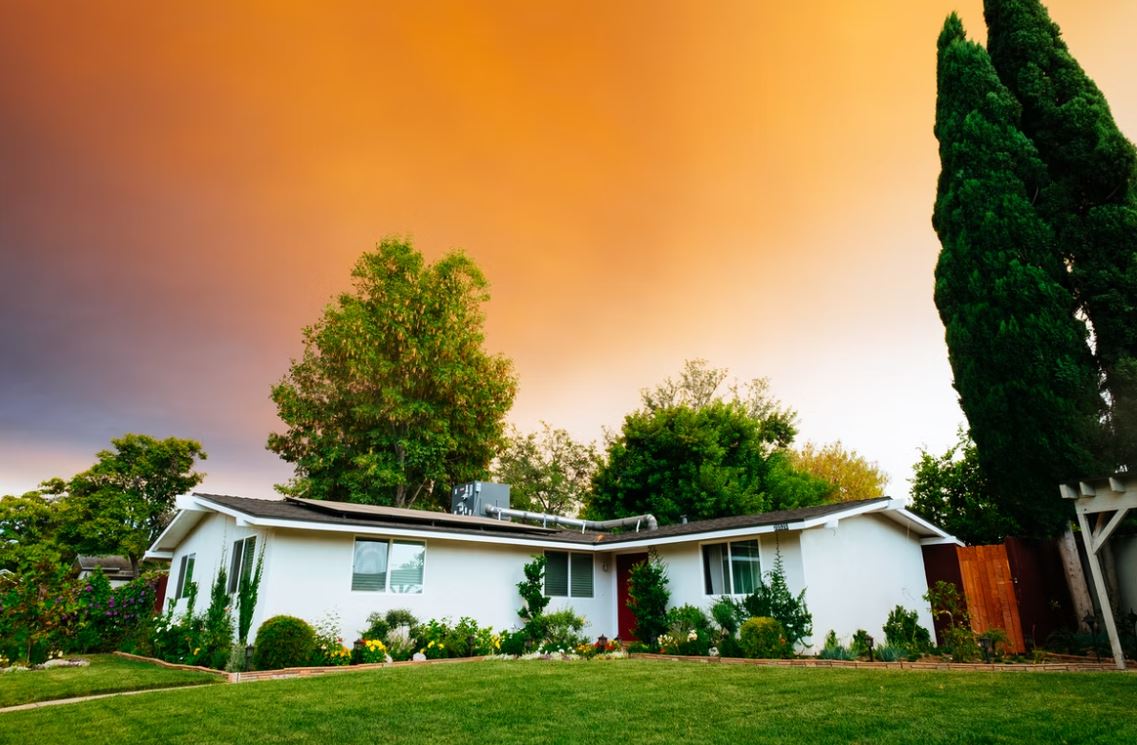What is “home hardening?” … And Why Is It Important?

Believe it or not, most houses that get lost in wildfires aren’t lost because they were unlucky enough to be located in the heart of a blaze. They burn to the ground because of some relatively undramatic cause — an ember wafting into a vent, or a low-intensity fire miles away from the red zone.
In fact, more than half of all houses lost to wildfires are ignited from the inside, from firebrands that enter the house.
As you can imagine, these burnouts were eminently preventable — but not automatically. A home can be safeguarded against these avoidable dangers through a process known as hardening.
What is “home hardening?”
Hardening a home is the process of increasing its resistance to wildfire within the home ignition zone — an area within 100-200 feet of any structures and vegetation found on the property.
This can be done by:
- Reducing the home’s vulnerability to heat.
- Reducing the number of open pathways a fire has to reach your house in the first place.
- Rendering fire-resistant as many surfaces on the house as possible.
- Blocking any potential points of ingress for embers and other flammable material.
Why should you harden your home?
Building codes have evolved to require wildfire-resistant building standards, especially in areas prone to wildfires, but older homes may have been built according to older codes — which may mean your home is vulnerable to preventable ignitions.
Note that hardened doesn’t mean fireproof. Homes are essentially made of fuel for wildfires, from foundation to eaves. Hardening is essentially the practice of acknowledging it and using this foreknowledge to identify any potential failure points where the fire could take hold, and taking steps to mitigate or even eliminate that vulnerability.
How to fire-harden a home
Protect Your Roof
The roof is the part of your home most vulnerable to ignition. It’s a large surface, flat or at a shallow pitch, where embers and firebrands can come to rest and just sit there burning until they penetrate into the house through sheer attrition. It’s your first line of defense in home hardening.
First things first — make sure the surface of your roof is not made of wood or any other combustible material. A hardened roof should be made of a fire-resistant material like metal, tile, clay, or composition.
But it’s not just the roof itself — it’s also what falls on the roof. A hardened roof must be regularly cleared of leaves and debris, which could ignite and spread to other parts of the house.
Protect Your Vents
Again, more than half of the houses lost to wildfire ignite from the inside. These homes could be protected by closing off those points of access by which embers and firebrands enter the home.
One option is to cover every vent with metal mesh, either 1/8-inch or 1/16-inch. IMPORTANT: Don’t use plastic or fiberglass mesh — they will melt and let in embers anyway.
Another option is to use vents rated for wildland-urban interface (WUI). WUI vents are designed with a built-in ember covering.
Box In Your Eaves
Eaves that were not built with fire-resistant materials should be boxed in with noncombustible material using the soffited-eave design.
Upgrade Your Windows
Even before a wildfire reaches the house, the heave can be intense enough to cause weaker windows to shatter, providing a point of easy ingress for embers and firebrands. Large windows and single-paned windows are particularly susceptible to this effect.
Steps to take to prevent your windows from becoming a wildfire vulnerability include:
- Replacing single-pane windows with dual-paned windows.
- Limiting the size of your windows, especially on parts of the house that face vegetation.
- Install metal screens on as many windows as possible to block embers even if the glass breaks.
Cover Your Walls
Houses in wildfire zones should not have untreated wood shiplap, shingles, or panels as exterior siding — especially when there are other houses within 30 feet of the walls. Consider siding your exterior walls with materials like stucco, fiber cement, or wood that has been treated with fire-retardant chemicals. Make sure this ignition-resistant siding goes all the way up, from the foundation to the roof.
Protect Your Decks and Patios
Wooden decks and patios within ten feet of the structure can pose a serious fire risk to the building, even if the rest of the house is hardened. If it becomes a significant blaze, it might penetrate even fire-resistant materials.
Cover or rebuild these surfaces with fire-resistant materials. Create a defensible space downhill from the deck so fire can’t creep up under the deck. Clear all combustible debris off the deck regularly, and install a fire-resistant covering over any decks and patios if possible to prevent embers and firebrands from coming to rest on the deck.
Don’t Neglect Your Gutters
Gutters full of debris can easily ignite and create a fire that overwhelms your other fire defenses. Make sure you regularly clear debris out of your gutters, or install gutter covers to keep debris from accumulating in your gutters in the first place.
Cover Your Chimney
The chimney offers a major point of ingress for embers and firebrands. Install metal mesh around your chimney opening, or replace it with a WUI chimney vent.
Seal Your Garage
Install weather-stripping to seal your garage and prevent embers from entering. Keep any flammable chemicals away from combustible materials so they don’t ignite and make any fires worse.
Reinforce Your Fence
Ideally, any wooden fencing should be as far away from the house as possible. Close-in wooden fences could end up channeling a fire right to your house. If possible, replace wooden fencing with fire-retardant-treated wood or non-combustible materials.
————————————————————————————————————
Again, none of this makes your home completely invulnerable to wildfires, nor does it eliminate the need to protect your investment with fire insurance.
But hardening your home against wildfires can make it resistant to many of the most common sources of total fire loss. If you value your home, as well as the keepsakes and memories contained within, it’s a necessary step to managing the risks we face by living in wildfire-prone areas.

